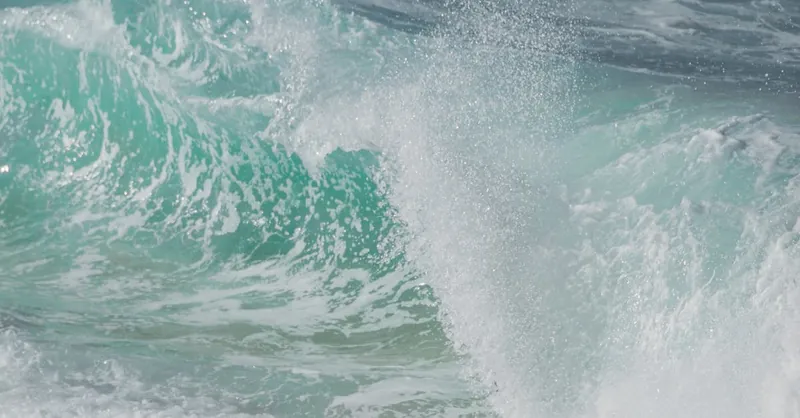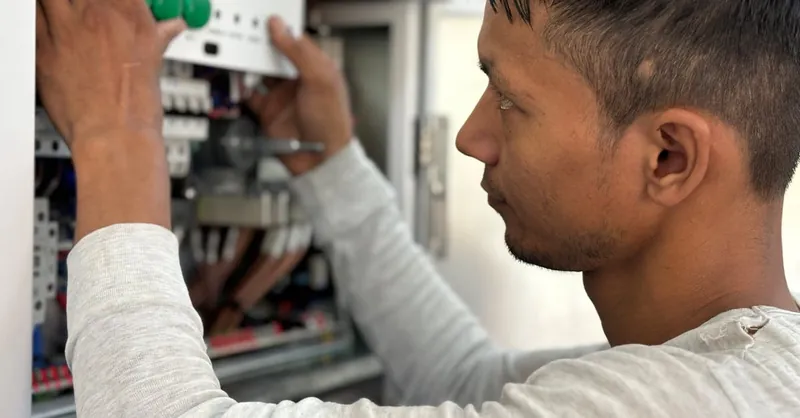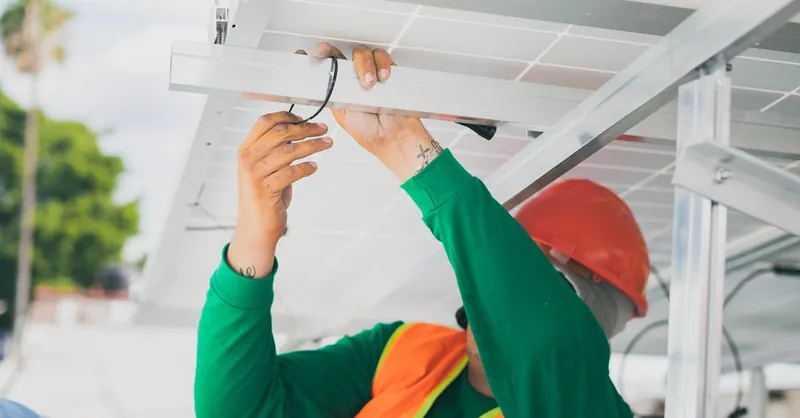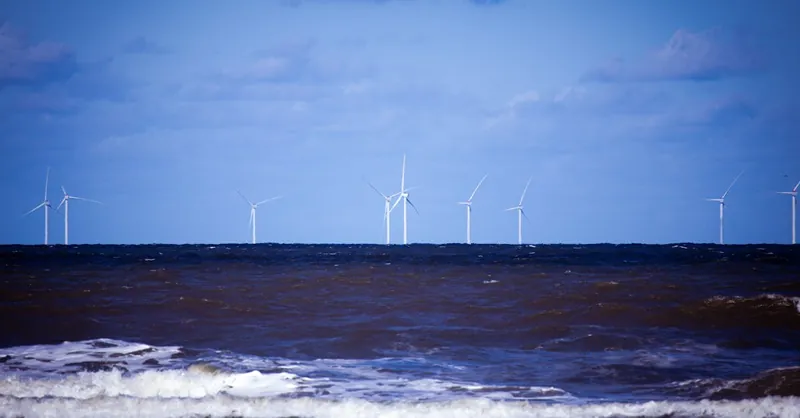Emerging Wave and Tidal Energy Technologies Explained
Category: Renewable Energy
Discover the Future of Ocean-Based Renewable Power
If you’re an electrical engineer or a curious beginner eager to understand the rapidly advancing world of marine renewable energy, you’ve landed in the right place. Emerging wave and tidal energy technologies represent some of the most promising frontiers in sustainable power generation, harnessing the vast, untapped energy of our oceans. Maybe you’ve explored more familiar renewables like solar or wind but wonder how wave and tidal could complement or revolutionize the energy mix with their unique consistency and potential scale.
This post meets you where you are: whether you’re looking for a clear technical breakdown or an insightful overview that connects science, innovation, and practical deployment challenges. We’ll cut through jargon to give you a balanced, detailed look at the state-of-the-art technologies driving wave and tidal energy forward, the physics enabling them, and their real-world prospects and hurdles.
Unlike surface-level content, this guide dives deep into device types, energy extraction principles, technological innovations, and grid integration strategies. By the end, you’ll have a clear understanding of how emerging marine energy solutions fit into the evolving renewable landscape, empowering you to grasp their relevance whether for academic pursuit, design considerations, or broader energy transition awareness. Let’s explore the power beneath the waves that might just light up our future.
- Discover the Future of Ocean-Based Renewable Power
- Overview of Wave and Tidal Energy: Definitions, Ocean Energy Potential, and Environmental Context
- Fundamental Science of Wave and Tidal Power Generation: Hydrodynamics, Energy Flux, and Conversion Mechanisms
- Wave Energy Technologies: Description and Comparison of Key Devices
- Tidal Energy Technologies: Tidal Stream Turbines, Tidal Barrages, and Dynamic Tidal Power
- Innovations Accelerating Marine Energy: Advanced Materials, Control Systems, and Energy Storage Integration
- Challenges and Engineering Considerations: Marine Environment Durability, Installation, Maintenance, and Grid Connection
- Recent Projects and Case Studies: Global Leading Wave and Tidal Energy Installations and Lessons Learned
- Future Trends and Research Directions: Hybrid Systems, AI and IoT Applications, and Policy/Market Developments
Overview of Wave and Tidal Energy: Definitions, Ocean Energy Potential, and Environmental Context
Wave and tidal energy are two distinct but complementary forms of ocean-based renewable power that exploit the natural movements of water to generate electricity. Wave energy harnesses the kinetic and potential energy from surface waves caused primarily by wind interacting with the ocean surface. In contrast, tidal energy derives from the gravitational pull of the moon and sun, creating predictable and periodic rise and fall of sea levels and strong tidal currents. Both sources offer a huge advantage over solar and wind power: their relative consistency and high energy density, owing to the dense medium of water.
Ocean Energy Potential – A Vast and Largely Untapped Resource
The global ocean energy potential is immense, with wave energy alone estimated to represent over 2 terawatts (TW) worldwide, enough to supply a significant fraction of global electricity demand if effectively harnessed. Tidal energy, while more location-specific, can be exceptionally reliable and predictable, especially in coastal regions with strong tidal ranges or fast tidal currents. Countries with extensive coastlines and high tidal ranges—such as the United Kingdom, Canada, and South Korea—are already investing heavily in tidal projects.
- Wave energy resource is widespread and abundant along many of the world’s coasts, particularly in regions exposed to strong, persistent winds.
- Tidal energy resource depends on specific geographic features like estuaries and narrow straits where tidal flows are concentrated.
Environmental Context: Balancing Renewable Power and Marine Ecosystems
A critical factor in advancing wave and tidal energy technologies is understanding their environmental impact. Unlike fossil fuel plants, marine renewables produce no direct greenhouse gas emissions and have a much smaller carbon footprint. However, installation and operation of devices in marine environments raise concerns about effects on marine life, sediment transport, and local ecosystems.
- Devices must be designed and sited carefully to minimize disruption to fish, marine mammals, and seabirds.
- Environmental assessments and ongoing monitoring are essential to ensure that wave and tidal farms operate sustainably, preserving ocean health while contributing to climate mitigation goals.
The enormous potential of ocean energy—combined with responsible development practices—positions wave and tidal power as key contributors to a resilient, clean energy future. In the sections ahead, we’ll explore the science and cutting-edge engineering behind extracting this powerful resource efficiently and effectively.

Image courtesy of Patrick
Fundamental Science of Wave and Tidal Power Generation: Hydrodynamics, Energy Flux, and Conversion Mechanisms
Understanding the fundamental science behind wave and tidal power generation is essential to grasp how these marine renewables transform the ocean’s kinetic and potential energy into usable electricity. At the core lies hydrodynamics, the branch of fluid mechanics that explores how water moves and interacts with energy extraction devices. For wave energy, this involves analyzing the motion of water particles in surface waves—typically orbital or elliptical paths influenced by wind energy transferred to the ocean surface. Tidal energy, on the other hand, depends on predictable volumetric flows caused by gravitational forces from the moon and sun, resulting in strong, recurring currents and water level changes.
Key to both wave and tidal energy extraction is the concept of energy flux, which quantifies the rate at which energy passes through a given area of the ocean surface or cross-section of a tidal channel. The power available per unit width of a wave front can be approximated by the wave height and period, making parameters like wave amplitude and frequency critical in device design. Similarly, tidal power depends on the velocity and density of seawater flow, with energy content proportional to the cube of water velocity—meaning small increases in tidal current speed dramatically increase available power.
Conversion mechanisms transform this hydrodynamic energy into electrical power through various device architectures:
- Wave Energy Converters (WECs): These use oscillating bodies, floating buoys, or oscillating water columns that capture wave-induced motion, converting mechanical energy via hydraulic systems, linear generators, or air turbines.
- Tidal Stream Turbines: Function like underwater wind turbines, using rotor blades to harness kinetic energy from fast-moving tidal currents, turning it directly into mechanical rotation coupled to generators.
- Tidal Barrages and Lagoons: These exploit potential energy created by tidal height differences, controlling flow through turbines integrated into dams or embankments.
By deeply understanding the hydrodynamics, energy flux characteristics, and conversion technologies, electrical engineers and enthusiasts can better appreciate the challenges and opportunities inherent in maximizing the efficiency and reliability of wave and tidal power systems. These principles serve as the foundation upon which innovative marine energy solutions are being developed to meet future renewable energy demands.

Image courtesy of Kammeran Gonzalez-Keola
Wave Energy Technologies: Description and Comparison of Key Devices
Wave energy conversion relies on a variety of engineered devices designed to capture and harness the mechanical power of ocean surface waves. Among the most prominent wave energy converters (WECs) are Point Absorbers, Oscillating Water Columns, Attenuators, and Overtopping Devices. Each device type exploits different aspects of wave dynamics, offering unique advantages and trade-offs in terms of efficiency, scalability, environmental impact, and technical complexity.
1. Point Absorbers
Point Absorbers are buoy-like structures that float on the water surface and operate by moving relative to a fixed reference point, typically anchored to the seabed. These devices extract energy from the vertical motion of waves, converting the oscillating motion into electricity through hydraulic pumps or linear generators. Their compact size and ability to capture energy from waves coming from multiple directions make them versatile for varied marine environments.
- Advantages: High energy density capture, relatively simple mooring systems, and adaptability to deeper waters.
- Challenges: Mechanical wear from constant motion and the need for robust power take-off systems.
2. Oscillating Water Columns (OWCs)
OWCs leverage the wave-induced rise and fall of water inside a partially submerged chamber, which compresses and decompresses air above the water column. This action drives an air turbine coupled to a generator, producing electricity. OWCs are stationary structures often integrated into breakwaters or offshore platforms, suitable for nearshore environments.
- Advantages: Fewer moving parts submerged in water, making maintenance easier; well-understood pneumatic conversion technology.
- Challenges: Site-specific due to reliance on shoreline conditions and limited to shallow waters.
3. Attenuators
Attenuators are long, multi-segmented floating devices aligned parallel to the wave direction. They capture energy from the horizontal motion of waves as the segments flex and bend at their joints. This motion drives hydraulic rams or rotational generators located within the joints. Attenuators are ideal for offshore deployment where wave directions are consistent.
- Advantages: Ability to capture energy over large wavefronts; well-suited for high-energy ocean conditions.
- Challenges: Complex mechanical articulation systems and mooring arrangements; potentially higher maintenance costs.
4. Overtopping Devices
Overtopping devices create reservoirs by capturing seawater as waves crash over a ramp structure. The collected water is then released back to the ocean through low-head turbines, generating electricity from the water’s potential energy gradient. These devices combine concepts from wave and hydroelectric power generation.
- Advantages: Continuous power generation due to water storage; reduced mechanical complexity above water.
- Challenges: Large physical footprint and construction costs; site-specific due to wave climate and coastal topography.
| Device Type | Energy Capture Mechanism | Typical Deployment | Key Advantages | Primary Challenges |
|---|---|---|---|---|
| Point Absorbers | Vertical wave motion | Deep or shallow waters | Compact, multidirectional | Mechanical wear, power take-off |
| Oscillating Water Columns | Air compression from wave oscillation | Nearshore, integrated structures | Easier maintenance, pneumatic | Location specific, shallow water |
| Attenuators | Horizontal wave-induced flexing | Offshore, consistent wave directions | Large wavefront capture | Complex mechanics, maintenance |
| Overtopping Devices | Wave overtopping into reservoirs | Coastal zones with suitable ramps | Continuous output, simpler above water | Large size, costly construction |
Understanding these core wave energy technologies enables electrical engineers and renewable energy enthusiasts to evaluate site feasibility, performance potential, and integration challenges. Selecting the appropriate device depends heavily on the local wave climate, water depth, environmental constraints, and grid connectivity prospects—factors critical to advancing ocean wave energy into a viable cornerstone of the renewable energy portfolio.

Image courtesy of Patrick
Tidal Energy Technologies: Tidal Stream Turbines, Tidal Barrages, and Dynamic Tidal Power
Tidal energy harnesses the predictable movement of ocean tides to generate clean, renewable electricity. Among the primary tidal energy technologies are tidal stream turbines, tidal barrages, and the emerging concept of dynamic tidal power (DTP). Each approach exploits different aspects of tidal mechanics, offering unique advantages in power density, reliability, and scalability.
Tidal Stream Turbines
Often described as the underwater counterparts of wind turbines, tidal stream turbines extract kinetic energy from fast-moving tidal currents. These turbines are strategically deployed in narrow channels or coastal areas with strong tidal flows where water velocities can exceed 2–3 meters per second. The device features rotor blades that spin as water flows past, driving a generator to produce electricity. Key benefits include:
- High energy density because seawater is roughly 800 times denser than air, enabling turbines to generate significant power even at moderate flow speeds.
- Predictable power output, as tidal currents follow well-understood gravitational cycles.
- Minimal visual impact due to underwater installation, reducing conflicts with coastal land use.
However, tidal stream turbines must withstand corrosive marine conditions, biofouling, and the mechanical stresses of turbulent flows. Advances in materials engineering, turbine blade design, and floating or seabed-mounted platforms continue to improve system durability and cost-effectiveness.
Tidal Barrages
Tidal barrages operate similarly to traditional hydropower dams but are built across estuaries or tidal basins with large tidal ranges—typically exceeding 5 meters. The barrage traps water at high tide in a reservoir and then releases it through turbines during ebb tide, converting the potential energy from the height differential into electricity. Notable features of tidal barrages include:
- Large, stable power output aligned with predictable high and low tides.
- Ability to serve as coastal flood defenses while generating power.
- Long operational lifespans with established turbine technology adapted from hydropower.
Despite advantages, tidal barrages involve significant environmental and ecological trade-offs, including disruption of sediment flow, marine habitats, and fish migration. High upfront capital costs and site-specific geography further limit widespread deployment.
Dynamic Tidal Power (DTP)
A relatively innovative and less conventional method, dynamic tidal power proposes constructing very long dams perpendicular to the coastline—without enclosing a basin—to create artificial tidal height differences through the interaction of tidal waves and artificial structures. The principle leverages the phase difference of tidal waves on either side of the dam to generate a persistent head of water, which can be harnessed using turbines embedded along the dam.
Advantages of DTP include:
- Potential for large-scale power generation without the need for favorable estuary geography.
- Reduced environmental impact compared to barrages, as coastal ecosystems remain largely intact.
- Ability to capture energy from multiple tidal cycles simultaneously.
Currently, dynamic tidal power remains at the conceptual or pilot project stage, requiring extensive hydrodynamic modeling and engineering innovation before commercial viability can be realized.
Together, these tidal energy technologies represent a diverse toolkit for capturing the immense and predictable energy of the oceans. By integrating tidal stream turbines' kinetic extraction, tidal barrages' potential energy utilization, and the ambitious scope of dynamic tidal power, researchers and engineers are expanding the frontiers of marine renewable energy. Understanding each technology’s operational principles, site requirements, and environmental impacts is crucial for designing sustainable and economically viable tidal power projects that can reliably contribute to the global renewable energy mix.

Image courtesy of Jess Loiterton
Innovations Accelerating Marine Energy: Advanced Materials, Control Systems, and Energy Storage Integration
The rapid evolution of wave and tidal energy technologies is being propelled by groundbreaking innovations in advanced materials, sophisticated control systems, and the strategic integration of energy storage solutions. These technological breakthroughs address longstanding challenges in durability, efficiency, and grid compatibility—unlocking the true potential of marine renewables as reliable and cost-competitive components of the global energy mix.
Advanced Materials Enhancing Durability and Performance
Marine energy devices operate in notoriously harsh environments characterized by saline water, biofouling, strong mechanical stresses, and corrosion. To overcome these challenges, cutting-edge advanced materials are being developed and deployed, including:
- Corrosion-resistant composites and alloys that significantly extend component lifespans while reducing maintenance frequency.
- Self-healing polymers and coatings designed to repair minor damages autonomously, preserving structural integrity.
- Lightweight yet high-strength carbon-fiber-reinforced composites that improve buoyancy and fatigue resistance in floating wave energy converters and tidal turbine blades.
- Anti-biofouling surface treatments and nanomaterial coatings that inhibit organism attachment, boosting efficiency and reducing drag.
These material innovations not only enhance device reliability but also reduce operational expenditures, thereby improving the overall economic feasibility of marine energy projects.
Intelligent Control Systems for Optimal Energy Capture
Sophisticated control systems employing real-time monitoring, predictive analytics, and adaptive algorithms are revolutionizing how wave and tidal devices respond to dynamic ocean conditions. Key advancements include:
- Active blade pitch and yaw controls in tidal turbines to maximize energy extraction under varying flow velocities and directions.
- Wave energy converters with real-time tuning to adjust damping and natural frequency, enabling resonance with incoming waves for peak efficiency.
- Deployment of machine learning models that predict sea state variations and optimize device parameters proactively, minimizing mechanical stress and maximizing power output.
- Integration of condition-based maintenance systems leveraging sensor data and IoT devices to preemptively identify faults, reducing downtime.
These control innovations ensure that marine energy systems operate closer to their maximum theoretical efficiency while maintaining structural health under fluctuating marine dynamics.
Energy Storage Integration for Grid Stability and Continuous Supply
A critical barrier for widespread marine energy adoption is the intermittent nature of ocean energy flux—although more predictable than wind or solar, tidal and wave power still exhibit variability in time and magnitude. The integration of energy storage technologies facilitates smoother grid integration and enhances dispatchability through:
- Battery energy storage systems (BESS) offering rapid response times and scalable capacity to buffer short-term fluctuations.
- Hydraulic accumulators and flywheel storage systems embedded within wave energy converters to store mechanical energy momentarily and release it at controlled rates.
- Development of hybrid systems combining marine energy with complementary renewables (e.g., offshore wind) combined with shared storage solutions to optimize overall generation profiles.
- Exploration of power-to-hydrogen technologies wherein excess electricity is converted to green hydrogen, enabling long-duration storage and sector coupling.
The coupling of advanced energy storage with marine power generation paves the way for reliable, continuous renewable electricity supply, essential for meeting grid codes and supporting energy transition goals.
By harnessing these innovations in material science, control engineering, and energy storage integration, wave and tidal energy technologies are rapidly maturing from experimental prototypes to commercially viable solutions. These advancements mitigate environmental wear, amplify energy capture efficiency, and enable smoother grid integration—ultimately accelerating the global deployment of marine renewables as cornerstone components of a sustainable energy future.

Image courtesy of ranjeet .
Challenges and Engineering Considerations: Marine Environment Durability, Installation, Maintenance, and Grid Connection
Harnessing the power of wave and tidal energy involves overcoming unique engineering challenges posed by the harsh and dynamic marine environment. One of the primary concerns is marine environment durability. Devices must withstand continuous exposure to corrosive saltwater, biofouling, strong hydrodynamic forces, and extreme weather events like storms and hurricanes. This necessitates the use of robust materials, protective coatings, and structural designs that resist fatigue and erosion over long operational lifespans, often exceeding 20 years. Engineers also face the complex task of balancing device strength with cost-efficiency, ensuring survivability without compromising economic viability.
Installation and maintenance of marine energy systems further complicate project execution. Deploying wave and tidal converters often requires specialized vessels, heavy-lift equipment, and favorable weather windows, all of which contribute to significant upfront costs. Due to remote offshore locations, maintenance routines must be minimized or remotely managed to reduce costly vessel operations. Innovations in modular designs, condition-based monitoring, and predictive maintenance play crucial roles in boosting system reliability and reducing downtime. Accessibility challenges also demand that electrical and mechanical components be highly resilient or easily replaceable without extensive disassembly.
Lastly, grid connection poses critical challenges for integrating marine energy into existing power networks. Unlike onshore renewables, offshore wave and tidal farms require undersea cabling, substations, and robust transmission infrastructure to transport electricity to shore. The variability in power output—even though more predictable than wind or solar—requires advanced power electronics and grid management systems to maintain voltage and frequency stability. Moreover, electrical engineers must design flexible interconnection solutions that accommodate future expansions and hybridization with other offshore renewables. Addressing these engineering considerations holistically is essential to unlock the full potential of wave and tidal energy as reliable, scalable contributors to the clean energy grid.

Image courtesy of Los Muertos Crew
Recent Projects and Case Studies: Global Leading Wave and Tidal Energy Installations and Lessons Learned
As wave and tidal energy technologies transition from experimental phases to commercial deployments, several pioneering projects worldwide provide valuable insights into practical performance, engineering challenges, and environmental impacts. Examining these leading global installations reveals critical lessons that inform future marine renewable energy development and integration.
Noteworthy Wave Energy Projects
-
WaveRoller by AW-Energy (Finland):
Located off the coast of Portugal, this large-scale oscillating flap device has demonstrated robust operation in harsh Atlantic conditions. The WaveRoller captures wave energy through seabed-mounted panels that oscillate with wave motion, driving hydraulic pistons linked to generators. Key takeaways include effective power output under diverse sea states and the importance of modularity to simplify installation and maintenance logistics. -
CETO System by Carnegie Clean Energy (Australia):
Utilizing submerged buoys tethered to seabed pumps, CETO devices convert wave energy into pressurized seawater for onshore power generation. This project has highlighted the advantage of offshore, fully submerged designs in minimizing visual impact and biofouling. Additionally, it reinforced how direct hydraulic energy transmission to shore can reduce offshore electrical complexity and improve reliability.
Exemplary Tidal Energy Installations
-
Sihwa Lake Tidal Power Station (South Korea):
The world’s largest tidal barrage project, harnessing approximately 254 MW from a tidal reservoir. This station demonstrates the potential of tidal barrages to provide stable, grid-scale renewable power while also addressing flood control and land reclamation. Lessons emphasize the need for comprehensive environmental assessments to mitigate habitat alteration and sediment dynamics. -
MeyGen Tidal Stream Project (United Kingdom):
Situated in the Pentland Firth, MeyGen utilizes seabed-mounted tidal turbines located in one of the world’s fastest tidal flow regions, producing up to 6 MW during initial phases with plans to expand to 398 MW. This project underscores the value of detailed hydrodynamic modeling for turbine siting and the effectiveness of scalable phased deployment in managing financial and technical risks.
Lessons Learned and Best Practices
- Site Selection is Paramount: Optimal energy extraction depends on accurate assessment of local wave and tidal regimes, seabed conditions, and environmental sensitivities. Early-stage hydrographic surveys and modeling are crucial to ensure long-term project viability.
- Modularity and Scalability: Designing devices for modular installation facilitates incremental capacity expansion and easier maintenance, helping reduce initial capital expenditure and operational downtime.
- Environmental Monitoring: Continuous impact assessments and adaptive management strategies help balance power generation goals with marine ecosystem preservation, fostering regulatory approval and community acceptance.
- Grid Integration and Hybrid Systems: Successful projects integrate advanced power electronics and sometimes combine wave or tidal farms with complementary offshore renewables, improving overall generation stability and grid compatibility.
By learning from these global trailblazers in wave and tidal energy, engineers and project developers can refine technologies, optimize installation practices, and better anticipate environmental and operational challenges. These insights accelerate the path toward making ocean-based renewable power a dependable cornerstone of the worldwide clean energy transition.

Image courtesy of Lisa from Pexels
Future Trends and Research Directions: Hybrid Systems, AI and IoT Applications, and Policy/Market Developments
As wave and tidal energy technologies advance, the future landscape of marine renewables is increasingly shaped by interdisciplinary innovations, strategic hybridization, and supportive policy frameworks. These emerging trends are crucial to overcoming existing limitations, optimizing energy capture, and accelerating widespread deployment within the global clean energy transition.
Hybrid Marine Energy Systems: Synergizing Ocean Renewables
One of the most promising research directions is the development of hybrid systems that combine wave, tidal, and other offshore renewable energy technologies such as wind and solar. Hybridization offers several benefits:
- Enhanced grid reliability by smoothing out power fluctuations inherent in individual energy sources.
- Shared infrastructure costs through joint foundations, cabling, and maintenance operations, reducing overall project expenditures.
- Optimized site utilization by harnessing complementary energy patterns—tidal currents provide predictability, while wave and wind energy add variability and peak power.
Innovative hybrid platforms integrating tidal stream turbines with wave energy converters or offshore wind farms not only maximize marine space use but also create versatile energy hubs capable of delivering consistent and dispatchable power. Research is focusing on advanced system design, joint control strategies, and multi-resource forecasting to fully unlock hybrid potential.
Artificial Intelligence (AI) and Internet of Things (IoT): Revolutionizing Marine Energy Performance
Cutting-edge AI and IoT applications are transforming how wave and tidal energy devices operate, maintain, and integrate with power grids:
- Predictive Analytics and Real-Time Optimization: Machine learning models analyze vast streams of oceanographic, meteorological, and operational data to predict wave and tidal patterns, enabling dynamic tuning of device parameters for maximum energy extraction.
- Condition Monitoring and Remote Diagnostics: Sensor networks connected via IoT facilitate continuous monitoring of structural health, biofouling progression, and mechanical system performance, significantly reducing unplanned downtime and maintenance costs.
- Grid Management and Energy Forecasting: AI-driven algorithms enhance grid stability by predicting marine power generation fluctuations and coordinating with storage systems and complementary renewables for optimal dispatch.
These technologies drastically improve operational efficiency, extend equipment lifespan, and accelerate fault detection and response, driving marine energy toward scalability and economic competitiveness.
Policy and Market Developments: Enabling a Robust Marine Renewable Economy
The maturation of wave and tidal energy also hinges on progressive policy frameworks and market mechanisms that foster innovation and investment. Key trends include:
- Clear Regulatory Pathways: Streamlined permitting processes and environmental regulations reduce project development timelines and uncertainty, encouraging more stakeholders to enter the marine energy sector.
- Incentive Programs and Funding Initiatives: Governments and international bodies are expanding grants, subsidies, and feed-in tariffs tailored for marine renewables, bridging the cost gap with established energy sources.
- Market Integration and Power Purchase Agreements (PPAs): Innovative PPA structures and offshore renewable energy zones create stable revenue streams, attracting private investment and enabling large-scale marine energy deployment.
- International Collaboration and Standardization: Cross-border partnerships accelerate technology sharing, grid interconnection, and common standards development, reducing costs and facilitating global marine energy market growth.
Together, these policy and market developments are essential for scaling wave and tidal energy from niche projects to mainstream contributors, complementing broader renewable energy portfolios and supporting climate goals.
By focusing on hybrid marine energy systems, harnessing the power of AI and IoT in device operation and grid management, and leveraging supportive policy and market frameworks, the marine renewable energy sector is poised to make impactful strides. These future trends forge a pathway for wave and tidal technologies to become resilient, economically viable, and indispensable elements of the sustainable energy landscape worldwide.

Image courtesy of Patrick
